#USS Nikita
Photo
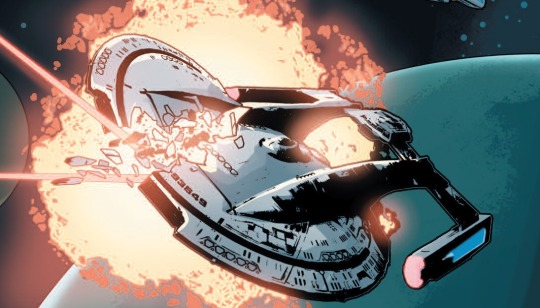
Name: U.S.S. Nikita
Registry: NCC-93649
Year: 2382
Class: Akira-class
Affiliation: Starfleet
Background: In an alternate universe where the Voldranaii surprise invasion occurred, Nikita was one of two ships available to delay the Voldrainaii’s advance and allow Andorians time to evacuate from their homeworld. Nikita was swiftly destroyed.
Appeared in Star Trek: Hive, IDW Comics
#Star Trek#Star Trek Comics#USS Nikita#Akira Class#Starship#Starfleet#Federation#Star Trek Hive#Hide and Queue
28 notes
·
View notes
Text
Events 3.9
141 BC – Liu Che, posthumously known as Emperor Wu of Han, assumes the throne over the Han dynasty of China.
1009 – First known mention of Lithuania, in the annals of the monastery of Quedlinburg.
1226 – Khwarazmian sultan Jalal ad-Din conquers the Georgian capital of Tbilisi.
1230 – Bulgarian Tsar Ivan Asen II defeats Theodore of Epirus in the Battle of Klokotnitsa.
1500 – The fleet of Pedro Álvares Cabral leaves Lisbon for the Indies. The fleet will discover Brazil which lies within boundaries granted to Portugal in the Treaty of Tordesillas in 1494.
1701 – Safavid troops retreat from Basra, ending a three-year occupation.
1765 – After a campaign by the writer Voltaire, judges in Paris posthumously exonerate Jean Calas of murdering his son. Calas had been tortured and executed in 1762 on the charge, though his son may have actually died by suicide.
1776 – The Wealth of Nations by Scottish economist and philosopher Adam Smith is published.
1796 – Napoléon Bonaparte marries his first wife, Joséphine de Beauharnais.
1811 – Paraguayan forces defeat Manuel Belgrano at the Battle of Tacuarí.
1815 – Francis Ronalds describes the first battery-operated clock in the Philosophical Magazine.
1841 – The U.S. Supreme Court rules in the United States v. The Amistad case that captive Africans who had seized control of the ship carrying them had been taken into slavery illegally.
1842 – Giuseppe Verdi's third opera, Nabucco, receives its première performance in Milan; its success establishes Verdi as one of Italy's foremost opera composers.
1842 – The first documented discovery of gold in California occurs at Rancho San Francisco, six years before the California Gold Rush.
1847 – Mexican–American War: The first large-scale amphibious assault in U.S. history is launched in the Siege of Veracruz.
1862 – American Civil War: USS Monitor and CSS Virginia (rebuilt from the engines and lower hull of the USS Merrimack) fight to a draw in the Battle of Hampton Roads, the first battle between two ironclad warships.
1908 – Inter Milan was founded on Football Club Internazionale, following a schism from A.C. Milan.
1916 – Mexican Revolution: Pancho Villa leads nearly 500 Mexican raiders in an attack against the border town of Columbus, New Mexico.
1933 – Great Depression: President Franklin D. Roosevelt submits the Emergency Banking Act to Congress, the first of his New Deal policies.
1942 – World War II: Dutch East Indies unconditionally surrendered to the Japanese forces in Kalijati, Subang, West Java, and the Japanese completed their Dutch East Indies campaign.
1944 – World War II: Soviet Army planes attack Tallinn, Estonia.
1945 – World War II: A coup d'état by Japanese forces in French Indochina removes the French from power.
1945 – World War II: Allied forces carry out firebombing over Tokyo, destroying most of the capital and killing over 100,000 civilians.
1946 – Bolton Wanderers stadium disaster at Burnden Park, Bolton, England, kills 33 and injures hundreds more.
1954 – McCarthyism: CBS television broadcasts the See It Now episode, "A Report on Senator Joseph McCarthy", produced by Fred Friendly.
1956 – Soviet forces suppress mass demonstrations in the Georgian SSR, reacting to Nikita Khrushchev's de-Stalinization policy.
1957 – The 8.6 Mw Andreanof Islands earthquake shakes the Aleutian Islands, causing over $5 million in damage from ground movement and a destructive tsunami.
1959 – The Barbie doll makes its debut at the American International Toy Fair in New York.
1960 – Dr. Belding Hibbard Scribner implants for the first time a shunt he invented into a patient, which allows the patient to receive hemodialysis on a regular basis.
1961 – Sputnik 9 successfully launches, carrying a dog and a human dummy, and demonstrating that the Soviet Union was ready to begin human spaceflight.
1967 – Trans World Airlines Flight 553 crashes in a field in Concord Township, Ohio following a mid-air collision with a Beechcraft Baron, killing 26 people.
1974 – The Mars 7 Flyby bus releases the descent module too early, missing Mars.
1976 – Forty-two people die in the Cavalese cable car disaster, the worst cable-car accident to date.
1977 – The Hanafi Siege: In a 39-hour standoff, armed Hanafi Muslims seize three Washington, D.C., buildings.
1978 – President Soeharto inaugurated Jagorawi Toll Road, the first toll highway in Indonesia, connecting Jakarta, Bogor and Ciawi, West Java.
1987 – Chrysler announces its acquisition of American Motors Corporation
1997 – Comet Hale–Bopp: Observers in China, Mongolia and eastern Siberia are treated to a rare double feature as an eclipse permits Hale-Bopp to be seen during the day. As the comet made its closest approach to Earth on March 26, all 39 active members of the Heaven's Gate cult committed ritual mass suicide over a period of three days, in the belief that their spirits would be teleported into an alien spacecraft flying inside the comet's tail.
1997 – The Notorious B.I.G. is murdered in Los Angeles after attending the Soul Train Music Awards. He is gunned down leaving an after party at the Petersen Automotive Museum. His murder remains unsolved.
2011 – Space Shuttle Discovery makes its final landing after 39 flights.
2012 – A truce between the Salvadoran government and gangs in the country goes into effect when 30 gang leaders are transferred to lower security prisons.
1 note
·
View note
Text
Ek Duje Ke Vaaste Piano Notes | Title Song Season 1

Ek Duje Ke Vaaste Piano Notes
Notes :-
Honthon Pe Tere, Shikwon Ka Shor Hai,
D5# C5# B4 C5# D5#, A4# B4 C5# C5# A4# G4# F4#
Par Yeh Nigaahein, Kehti kuch aur hai,
D5# C5# B4 C5# D5#, A4# B4 C5# C5# A4# G4# F4#
Hooo...
B4 A4# G4# F4# G4#
Jo Hain Miley Lamhe Kahin, Chuth Na Jaaye Haath Se,
D4# B4 C5# B4 B4 A4# B4 A4# B4, D5# E5 F5# D5# C5# B4 C5# B4 C5# B4 A4#
Mil Jaane De Dil Jo Bane, Ek Duje Ke Vaaste
D4# B4 C5# B4 B4 A4# B4 A4# B4, D5# D5# E5 F5# D5# C5# B4 C5# B4 D5# B4 A4# G4#
Hooo.....
D5# F5# F5# G5# F5# D5# C5# B4 C5# D5# C5#
D5# F5# F5# G5# F5# D5# C5# B4 C5#
Hoo Kyun Hain Dabi Si Khwaahishein, Dil Mein Tere Bewajaa,
D5# D5# D5# D5# D5# D5# E5 E5 F5# E5 D5#, D5# E5 E5 F5# E5 D5# C5# B4 C5#
Hooo...
D5# C5# B4 C5# D5#
Jaake Zara Usse Bol De, Chahta Jisse Tu Raha,
D5# D5# D5# D5# E5 G5# F5# G5# F5# D5#, D5# E5 E5 F5# E5 D5# C5# B4 C5#
Hooo...
B4 A4# G4# F4#
Kahin Teri Khamoshiyaan Jeet Na Jaaye Pyaar Se,
D4# B4 C5# B4 B4 A4# B4 A4# B4, D5# E5 F5# D5# C5# B4 C5# B4 C5# B4 A4# G4#
Mil Jaane De Dil Jo Bane, Ek Duje Ke Vaaste
D5# E5 D5# C5# B4 A4# B4 A4# B4, D5# D5# E5 F5# D5# C5# B4 C5# B4 D5#
Hooo...
D5# F5# F5# G5# F5# D5# C5# B4 C5# D5# C5#
D5# F5# F5# G5# F5# D5# C5# B4 C5#
About Song :-
The song "Ek Duje Ke Vaaste" is a popular title track from the Indian television series "Ek Duje Ke Vaaste," Season 1. Here is some information about the song and the show:
Song Title: Ek Duje Ke Vaaste (Title Track)
Television Series: Ek Duje Ke Vaaste (Season 1)
Year: The first season of "Ek Duje Ke Vaaste" aired in 2016.
Singers: Jubin Nautiyal
Music Director: Sachin-Jigar
Lyricist: Varun Grover
Background:
"Ek Duje Ke Vaaste" was a Hindi television drama series that aired on Sony Entertainment Television. The show was known for its romantic storyline and featured actors Namik Paul and Nikita Dutta in the lead roles. The title track, "Ek Duje Ke Vaaste," played a significant role in setting the tone for the show and encapsulating its themes of love and sacrifice.
Music and Lyrics:
The song "Ek Duje Ke Vaaste" was composed by the music duo Sachin-Jigar, with lyrics penned by Varun Grover. The song beautifully captures the essence of the love story between the two main characters, Shravan and Suman, played by Namik Paul and Nikita Dutta, respectively. The lyrics reflect the emotional depth and the challenges faced by the characters in their quest for love.
Popularity:
The title track gained popularity not only for its melodious tune but also for the chemistry between the lead actors. It became a favorite among fans of the show and contributed to the show's success during its run.
Legacy:
"Ek Duje Ke Vaaste" was well-received during its initial run and developed a dedicated fan base. The show was appreciated for its portrayal of the central characters and their journey of love and sacrifice.
Please note that my knowledge is based on information available up to September 2021, and I do not have access to real-time data. If there have been any developments or new versions of the song or show since that time, I would recommend checking a reliable source for the most up-to-date information.
Read the full article
0 notes
Text
Cold war research
General information
The cold war was a period of time when there was a lot of tension between the USSR and USA after the second world war. It’s called the cold war because there wasn’t a direct conflict between the two however there were lots of proxy wars fought between the two like the Korean war and the Vietnam war. There were lots of ways the two super powers competed other than wars such as trade embargoes, sports, propaganda, physiological warfare, espionage and technological advancements. The cold war started shortly after the second world when NATO was formed which was in 1949 to prepare for a soviet attack and contain the spread of the soviets.
Korean war
The Korean war was the first major conflict after WW2 starting in 1950 only 5 years after WW2. The Korean war was fought between the Soviet backed North Koreans and the Western backed South Korea with both sides claiming to be the legitimate leaders of all of Korea. After WW2 the Japanese controlled Korea was split in two half being given to the soviets and the other half to the US. The war was started by the North when they invaded South Korea however the war would have started at some point even if the North didn’t invade as both sides wanted to rule the other. The reason the West wanted to have influence over Korea is because if war was to break out between the East and West Korea would be very strategically important as it borders China an Eastern country and that would let the West open up a second front for the soviets to deal with much easier. The Korean war never ended and is still going on today however there hasn’t been much or really any fighting going on since the Soviets and West left Korea.
American M46 tanks crossing the Imjin river in Korea
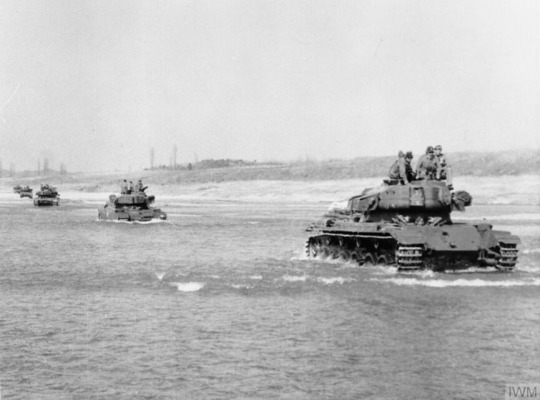
Scottish mortar pit in Korea

Vietnam war
The Vietnam war was a war fought by the US, Australians, New Zealanders and the peoples army of Vietnam or the PAVN against the Veit cong or VC. The VC was backed by the Soviets and China however they didn’t officially fight in the war but the US did. The Vietnam war started only 5 years after the Korean war in 1955 and like the Korean war was a proxy war between the western and eastern blocs. The US pulled out of Vietnam in 1973 due to strong public backlash as well as the war not going to great for them. During the war there were lots of protests as unlike previous wars there was lots of footage of the war and images publicly available. During the Vietnam war both sides used very inhumane methods of winning such as the VCs Punji traps or spike traps and the USs use of napalm and mass bombing of the jungle. During the Vietnam war the VC would make tunnels to help them get to places without US forces finding them so the US had to clear them when the found them which lead to the tunnel rats. Tunnel rats are people that had to crawl through the VC tunnels with only a flashlight and a hand gun to make sure they were clear but often the VC would trap tunnels they don’t use anymore with Punji traps or they would tie a poisonous snake to some bamboo in the tunnel which would stave it so when the tunnel rat would come through they would bite them and usually end up with them dying. Vietnam is very good proof that military intervention doesn’t work as Vietnam is one of the very few countries that are still communist to this day.
Tunnel rat

Puji trap

US napalm strike

Cuban missile crisis
The Cuban missile crisis was probably the closet we’ve come to nuclear war. The Cuban missile crisis was when the Soviets put nuclear missiles in Cuba which scared the US very much so as previously the Soviets couldn’t hit the US mainland with there ICBMs and would have to use plane dropped bombs submarines but they could now use missiles. Thankfully Kennedy and Nikita Khrushchev didn’t resort to blowing everyone to kingdom come but they were very close as the US took it as an act of aggression when the Soviets did it to deter the US from invading Cuba again. During the crisis there was an American aircraft carrier that had spotted a soviet submarine and dropped a depth charge to get it to surface and identify itself the only issue is that submarine was a soviet nuclear submarine that had lost contact with Moscow so they thought that war had already broken out especially now as they had jut been attacked so two out of the three officers agreed to shooting a nuclear torpedo at the carrier which would have most defiantly started the 3rd world war but one of those three officers Vasily Arkhipov said no to launching the torpedo which meant they couldn’t and saved the world form nuclear war.
US plane shadowing a Soviet ship during the Cuban missile crisis

Space race
The space race is probably the most well known part of the cold war due to it being the reason man stepped foot on the moon. The space race was a race to the moon between the Soviets and the US which started with the Soviets putting a satellite in space which terrified the US so they started investing in space travel and satellites. Despite the Soviets early and them putting something on the moon first it was the US that put man on the moon first with the Apollo 11 mission with the US Saturn V rocket the soviet counterpart being the N1 rocket.
Soviet N1 rocket
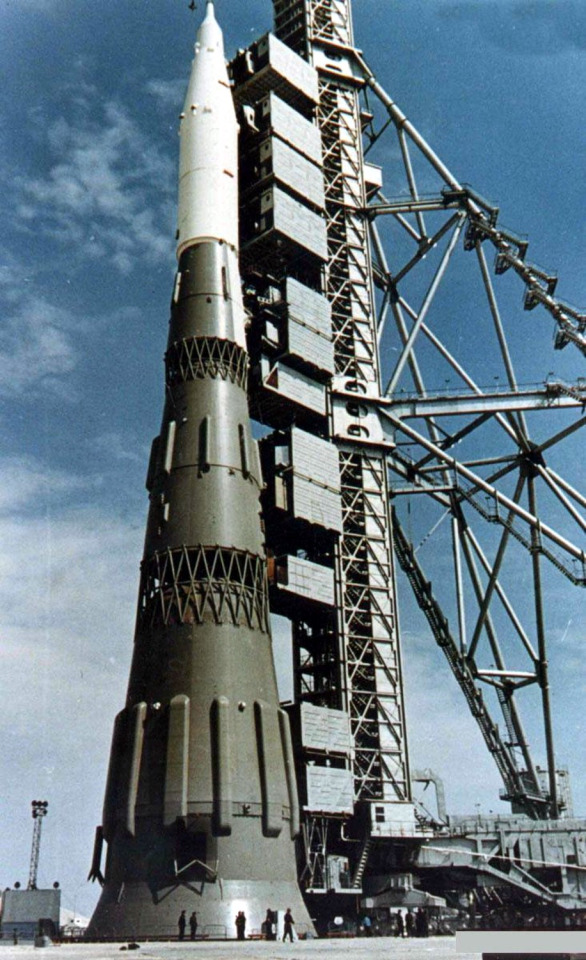
Saturn V

Map of the three worlds
The first world: Western bloc in blue
The second world: eastern bloc in red
The third world: non-aligned
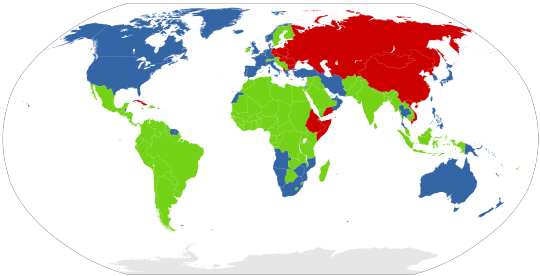
1 note
·
View note
Photo

210527-N-PW480-0079 GREAT LAKES, Ill., (May 27, 2021) – Rear Adm. Pete Garvin, commander, Naval Education and Training Command, awards the Legion of Merit to Rear Adm. Milton J. Sands III during a change of command ceremony inside the USS Yorktown Visitor Center at Recruit Training Command (RTC), May 27. Sands was relieved as the commander of Naval Service Training Command (NSTC) by Rear Adm. Jennifer S. Couture. Sands will next be assigned as commander, U.S. Special Operations Command Africa (SOCAFRICA) headquartered in Stuttgart, Germany. (U.S. Navy photo by Mass Communication Specialist 3rd Class Nikita Custer)
0 notes
Text
Answers to Discussion Day 29
So, as I asked yesterday - Can you name all the countries we’ve SEEN Kensi and Deeks in since they’ve met (and if you’re feeling ambitious, when)?
So I’m only counting from when they met in Hand to Hand (so Kensi’s assignment in Japan does not count). @wanna-be-bold was the first one to come up with most all of the countries! She was just missing one, but to be fair, that was the one I didn’t realize they’d been to until yesterday!
Countries they’ve been to together - 10
Trips to International waters - 2
Without their partners - each has 1 (ish...I’ll explain)
Kensi also has one canonical reference that is never seen (and two that don’t have a timeframe mentioned on them, so I don’t know if they qualify for the list - but I’ll tell you anyway! haha)
Here’s everything I could pull up - please let me know if I’m missing any! (Also, I did fill out the list for the rest of the team as well, if anyone is curious). In order of airing...
Partners travelling together -
Prague, Czech Republic (Familia, 2x24) - The team follows Hetty here en route to Romania. (this very first one is actually the one I somehow overlooked before this question. As it’s only mentioned with the city name I always lumped it in with Romania, despite the fact they are two different countries (and I knew that, I just forgot)! I’m silly!)
Constanța, Romania (Familia & Lange, H. 2x24 & 3x01) - the city isn’t mentioned in the episode (on screen or spoken), but the map Nell uses when locating the team is of Constanța.
Mexico (unspecified desert area near the border) (Greed, 3x08) - Kensi and Deeks follow the trail to find where the mysterious box traveled to.
Dubai, United Arab Emirates (Recruit, 4x2) - The team travels to Dubai at the end of the episode to take down the bad guys.
Tijuana, Mexico (Resurrection, 4x21) - Kensi and Deeks go to Mexico to pick up an informant with important info on the case.
Afghanistan (Camp Chapman and surrounding area) - Kensi episodes 5x11 - 5x19, Deeks - 5x19 only (Spoils of War)
Tijuana, Mexico (Black Wind, 6x14) - Kensi and Deeks enter Mexico via a drug tunnel, meeting up with Callen and Sam who are on an op.
Govorovo/Moscow, Russia (Chernoff, K, 6x24) - The team “rescues” Anna and keeps millions of barrels of oil from getting into the wrong hands.
Beit Jinn, Syria (Belly of the Beast, 8x02) - The city they travel to before their helicopter is blown from the sky and Kensi is injured.
Ho Chi Minh City (and surrounding areas), Vietnam (Goodbye, Vietnam, 9x14) - Rescuing Hetty.
Sinaloa/Los Mochis, Mexico (Ninguna Salida & To Live and Die in Mexico 9x24 & 10x01) - Rescuing Mosley’s kid
Havana, Cuba (No More Secrets, 10x22) - Travel with Joelle to rescue Anna/Nikita and take down Volkoff
“Eastern Border of Iraq”/Desert near Al Asad Air Base (False Flag & Let Fate Decide, 10x24 & 11x01) - Densi teams up with Sabatino and Wallace to try to locate those who can prove the False Flag.
Rihadh, Saudi Arabia (Let Fate Decide, 11x01) - The team reconvenes here after the mission is complete.
International Waters -
Sea of Japan (Free Ride, 4x10) - The team solves a case upon an Aircraft Carrier, the USS Van Buren.
Mediterranean Sea (?? - Accessible from the Coast of Syria) (Belly of the Beast, 8x02) - Aboard the USS Carl Vinson, the Aircraft Carrier on which Kensi has surgery after the helicopter crash in Syria.
Deeks without Kensi -
Jordan (Recruit, 4x2) - this is one of the “ish” answers - we SEE Deeks’s vacation photos from his trip, but we don’t actually see him THERE himself. Does it count? You guys tell me!
Kensi without Deeks -
"Iran, 12 kilometers from the Afghan Border” (Descent, 4x24) - Kensi travels with Callen to collect Janvier from Iran to “assist” with their nuclear weapons case
Kensi’s unseen/unknown timeframe locations -
Landstuhl, Germany (Belly of the Beast, 8x02) - Kensi is flown here for treatment - This is the canon reference that is NOT seen that I mentioned up top.
Jordan (Recruit, 4x02) - When discussing Deeks’s vacation, Kensi states that she’s “already been to Jordan”. But we don’t know when (it can be assumed it’s before she met him, since she’s telling him, but we don’t know for sure - maybe it was just classified).
Jakarta, Indonesia - When did she mention this one?! Oh yeah, slightly trick question. She mentions this on her trip to Hawaii in episode Ka Hakaka Maika'I (2x06) of Hawaii 5-0! hahaha! BUT, since the episode was written by one of NCIS: LA’s current writers (back when he was fulltime on 5-0), AND was specifically called back on in Answers, I’m counting it as canon. Again, we just don’t know when the trip happened.
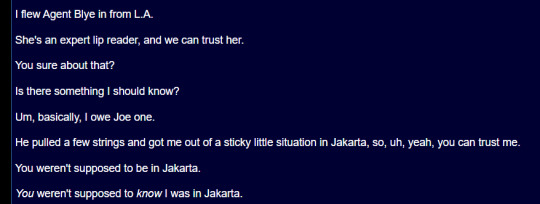
Did I miss anything?!
14 notes
·
View notes
Text
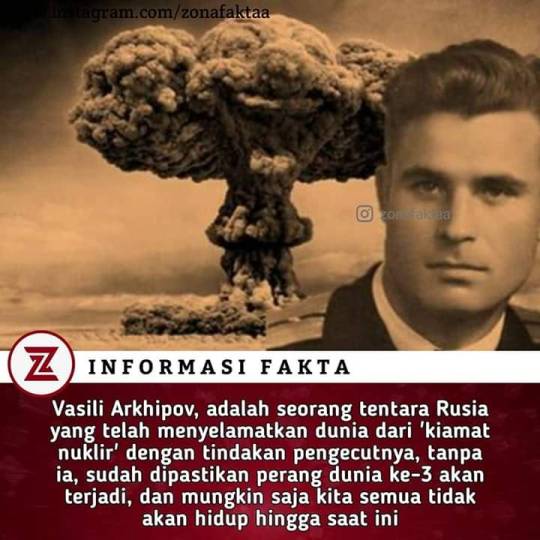
Perwira angkatan laut Rusia ini menjadi sosok pencegah berkobarnya Perang Dunia III, dan menjauhkan malapetaka akibat termonuklir di seluruh Bumi. Mungkin boleh dibilang, mereka yang lahir sebelum 27 Oktober 1962 mungkin berutang nyawa pada Vasili Alexandrovich Arkhipov.
Keputusan itu terjadi di tengah Krisis Rudal Kuba yang berlangsung pada 12-28 Oktober 1962.
Sebelumnya, pada Mei 1962, Presiden Uni Soviet Nikita Khrushchev dan Presiden Kuba Fidel Castro membuat kesepakatan 'rahasia' yang memungkinkan Moskow mulai membangun fasilitas nuklir di Kuba dan menimbun rudal -42 di sana.
Setelah keberadaan markas tersebut terkuak awal Oktober, Presiden Presiden John F. Kennedy mengadakan sejumlah pertemuan darurat dengan para penasihatnya. Sebuah konferensi pers terkait hal itu juga digelar.
Pemerintah terus melakukan pengawasan melekat terkait peningkatan aktivitas Uni Soviet di Pulau Kuba. Sepekan terakhir, bukti yang tak terbantahkan menguatkan fakta bahwa serangkaian misil ofensif kini sedang dipersiapkan di pulau yang terpenjara itu. Tujuan markas itu tak lain adalah menyediakan kapasitas nuklir melawan Belahan Bumi Barat...," demikian disampaikan Kennedy seperti dikutip dari situs On This Day untuk Today in History.
"Beberapa di antaranya termasuk rudal balistik jarak menengah, yang mampu membawa hulu ledak nuklir lebih dari 1.000 mil laut. Masing-masing mampu menyerang Washington, DC, Terusan Panama, Cape Canaveral, Meksiko City, atau kota lain di bagian tenggara AS, di Amerika Tengah, atau Karibia."
Setelahnya, sebuah pesawat mata-mata milik Amerika Serikat ditembak jatuh di Kuba, sementara U2 lain justru tersesat dan menyimpang ke wilayah udara Uni Soviet.
Drama penuh ketegangan itu bergeser ke titik gawat kala kapal perusak AS, USS Beale kemudian mulai menyisir lautan, mencari keberadaan kapal-kapal selam Moskow.
Pada 27 Oktober 1962, kapal perang Angkatan Laut Amerika Serikat memergoki keberadaan B-59 dekat Kuba.
B-59, kapal selam Uni Soviet itu, menjadi salah satu target buruan AS. Kala itu, pihak Amerika tak tahu, B-59 dipersenjatai dengan senjata nuklir.
Ada 22 torpedo yang diangkut di dalamnya, salah satunya adalah bom nuklir yang bisa menimbulkan kehancuran, lebih parah dari yang dialami Hiroshima dan Nagasaki.
Para kapten kapal selam diberi izin untuk meluncurkan torpedo nuklir, asalkan mendapat restu dari pejabat politik yang ditugaskan di sana.
Sementara itu, Kapten B-59, Valentin Savitsky tak tahu bahwa berondongan peluru yang diluncurkan AS adalah aksi non-mematikan yang ditujukan sebagai tembakan peringatan untuk memaksa kapalnya menyembul ke permukaan.
USS Beale, dengan kapal perusak lain berusaha memancing keluar bahtera itu menggunakan amunisi.
Semua orang dalam kapal selam dalam kondisi lelah setelah sebulan melaut. Makanan dan air terbatas, belum lagi suasana sumuk bukan main. Kapal selam itu terus bergetar, berguncang, tiap kali amunisi AS usai ditembakkan.
Savitsky yang dalam kondisi kelelahan berasumsi, kapal selamnya dijadikan target. Ia bahkan menyangka, Perang Dunia III telah pecah. Karena komunikasi terputus, mereka tak tahu apa yang terjadi di dunia luar.
Maka, torpedo nuklir berkekuatan 10 kiloton yang ada di B-59 disiapkan untuk diluncurkan. Targetnya adalah USS Randolf, kapal induk raksasa yang memimpin gugus tugas AS.
Seandainya torpedo dari B-59 diluncurkan ke Randolf, awan nuklir niscaya akan menyebar dari laut ke daratan.
Sejumlah titik akan jadi sasaran saling balas: Moskow, London, pangkalan udara di East Anglia dan konsentarasi pasukan di Jerman.
Gelombang bom atom berikutnya akan mengincar 'target-target ekonomi' -- diperkirakan setengah populasi Inggris akan tewas.
Sementara, Single Integrated Operational Plan (SIOP) -- skenario 'kiamat' milik Pentagon pastinya bakal meluncurkan 5.500 senjata nuklir ke ribuan target, termasuk ke negara-negara yang kala itu masuk kategori 'non-agresif' seperti China dan Albania.
Apa yang akan terjadi ke AS sendiri tidak pasti kala itu. Alasan bahwa Nikita Khrushchev mengirim rudal ke Kuba adalah karena Uni Soviet tidak memiliki ICBM atau rudal jarak jauh yang bisa mencapai AS.
Bisa jadi Negeri Paman Sam akan mengalami kehancuran yang lebih sedikit daripada yang dialami Inggris dan Eropa Barat.
Keputusan untuk tidak memulai Perang Dunia III tidak diambil di Kremlin atau Gedung Putih, tapi di ruang kontrol kapal selam.
Peluncuran torpedo nuklir B-59 memerlukan persetujuan dari ketiga perwira senior kapal. Vasili Arkhipov satu-satunya yang menolak.
Seandainya ia tak ada saat itu, perang nuklir niscaya pecah.
Kala itu Vasili Arkhipov bersikukuh agar kapalnya menyembul ke permukaan dan mengontak Moskow untuk meminta nasihat, alih-alih melepaskan torpedo.
Argumen panas lantas memuncak, namun akhirnya mereka setuju B-59 muncul ke permukaan. Apalagi masalah teknis terjadi kala itu.
Dari sisi Rusia, tindakan itu dianggap 'pengecut'. Keputusan Vasili Arkhipov dianggap tindakan menyerah.
Namun, bagi istrinya, Olga, Vasili Arkhipov adalah pahlawan.
"Seorang pria yang mencegah terjadinya perang nuklir adalah awak kapal selam Rusia. Namanya adalah Vasili Arkhipov. Aku bangga pada suamiku. Selalu bangga."
Pasca-insiden, Arkhipov terus bertugas di Angkatan Laut Soviet. Dia dipromosikan menjadi laksamana pada 1975 dan pensiun pada pertengahan 1980-an.
Dia meninggal pada tahun 1999 di usia 73 tahun karena komplikasi akibat keracunan radiasi yang dideritanya pada awal kariernya di angkatan laut.
Pada tahun 2002, Tom Blanton, Direktur penelitian dan lembaga arsip keamanan Amerika Serikat, National Security Archive mengatakan, "seorang pria bernama Vasili Arkhipov telah menyelamatkan dunia".
Sumber referensi liputan6.com
1 note
·
View note
Photo

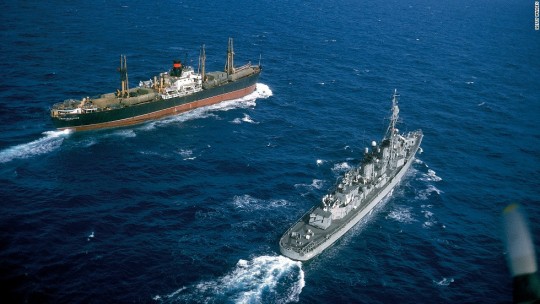

Guess who holds the nuclear launch codes now -we are doomed
October 22, 1962
In a televised speech of extraordinary gravity, President John F. Kennedy announces on October 22, 196 that U.S. spy planes have discovered Soviet missile bases in Cuba. These missile sites—under construction but nearing completion—housed medium-range missiles capable of striking a number of major cities in the United States, including Washington, D.C. Kennedy announced that he was ordering a naval “quarantine” of Cuba to prevent Soviet ships from transporting any more offensive weapons to the island and explained that the United States would not tolerate the existence of the missile sites currently in place. The president made it clear that America would not stop short of military action to end what he called a “clandestine, reckless, and provocative threat to world peace.”
What is known as the Cuban Missile Crisis actually began on October 15, 1962—the day that U.S. intelligence personnel analyzing U-2 spy plane data discovered that the Soviets were building medium-range missile sites in Cuba. The next day, President Kennedy secretly convened an emergency meeting of his senior military, political, and diplomatic advisers to discuss the ominous development. The group became known as ExCom, short for Executive Committee. After rejecting a surgical air strike against the missile sites, ExCom decided on a naval quarantine and a demand that the bases be dismantled and missiles removed. On the night of October 22, Kennedy went on national television to announce his decision. During the next six days, the crisis escalated to a breaking point as the world tottered on the brink of nuclear war between the two superpowers.
On October 23, the quarantine of Cuba began, but Kennedy decided to give Soviet leader Nikita Khrushchev more time to consider the U.S. action by pulling the quarantine line back 500 miles. By October 24, Soviet ships en route to Cuba capable of carrying military cargoes appeared to have slowed down, altered, or reversed their course as they approached the quarantine, with the exception of one ship—the tanker Bucharest. At the request of more than 40 nonaligned nations, U.N. Secretary-General U Thant sent private appeals to Kennedy and Khrushchev, urging that their governments “refrain from any action that may aggravate the situation and bring with it the risk of war.” At the direction of the Joint Chiefs of Staff, U.S. military forces went to DEFCON 2, the highest military alert ever reached in the postwar era, as military commanders prepared for full-scale war with the Soviet Union.
On October 25, the aircraft carrier USS Essex and the destroyer USS Gearing attempted to intercept the Soviet tanker Bucharest as it crossed over the U.S. quarantine of Cuba. The Soviet ship failed to cooperate, but the U.S. Navy restrained itself from forcibly seizing the ship, deeming it unlikely that the tanker was carrying offensive weapons. On October 26, Kennedy learned that work on the missile bases was proceeding without interruption, and ExCom considered authorizing a U.S. invasion of Cuba. The same day, the Soviets transmitted a proposal for ending the crisis: The missile bases would be removed in exchange for a U.S. pledge not to invade Cuba.
The next day, however, Khrushchev upped the ante by publicly calling for the dismantling of U.S. missile bases in Turkey under pressure from Soviet military commanders. While Kennedy and his crisis advisers debated this dangerous turn in negotiations, a U-2 spy plane was shot down over Cuba, and its pilot, Major Rudolf Anderson, was killed. To the dismay of the Pentagon, Kennedy forbid a military retaliation unless any more surveillance planes were fired upon over Cuba. To defuse the worsening crisis, Kennedy and his advisers agreed to dismantle the U.S. missile sites in Turkey but at a later date, in order to prevent the protest of Turkey, a key NATO member.
On October 28, Khrushchev announced his government’s intent to dismantle and remove all offensive Soviet weapons in Cuba. With the airing of the public message on Radio Moscow, the USSR confirmed its willingness to proceed with the solution secretly proposed by the Americans the day before. In the afternoon, Soviet technicians began dismantling the missile sites, and the world stepped back from the brink of nuclear war. The Cuban Missile Crisis was effectively over. In November, Kennedy called off the blockade, and by the end of the year all the offensive missiles had left Cuba. Soon after, the United States quietly removed its missiles from Turkey.
The Cuban Missile Crisis seemed at the time a clear victory for the United States, but Cuba emerged from the episode with a much greater sense of security.The removal of antiquated Jupiter missiles from Turkey had no detrimental effect on U.S. nuclear strategy, but the Cuban Missile Crisis convinced a humiliated USSR to commence a massive nuclear buildup. In the 1970s, the Soviet Union reached nuclear parity with the United States and built intercontinental ballistic missiles capable of striking any city in the United States.
A succession of U.S. administrations honored Kennedy’s pledge not to invade Cuba, and relations with the communist island nation situated just 80 miles from Florida remained a thorn in the side of U.S. foreign policy for more than 50 years. In 2015, officials from both nations announced the formal normalization of relations between the U.S and Cuba, which included the easing of travel restrictions and the opening of embassies and diplomatic missions in both countries.
3 notes
·
View notes
Text
September in Film
Did I write that thing? No, but I did start it. Below is not the reason for not finishing it though. I watched all of these films before the 12th and then did not have time after that.
211 (2018)
All the Real Girls (2003)
American Honey (2016)
Anon (2018)
Arsenal (2017)
Blue Iguana (2018)
The Children's Hour (1961)
City Hall (1996)
The Discovery (2017)
Downsizing (2017)
The Fate of the Furious (2017)
Free Fire (2016)
A Hologram for the King (2016)
Home Town Story (1951)
House of Frankenstein (1944)
Inconceivable (2017)
It Comes at Night (2017)
The Killing of a Sacred Deer (2017)
La Femme Nikita (1990)
Lies & Alibis (2006)
Looking Glass (2018)
The Lost Skeleton Returns Again (2009)
Love Happy (1949)
Love Nest (1951)
Mandy (2018)
Mute (2018)
The Prince and the Showgirl (1957)
The Sea of Trees (2015)
The Sessions (2012)
Sonny (2002)
St. Nick (2009)
Stronger (2017)
Tau (2018)
To Sir, with Love (1967)
Two for the Road (1967)
The Underneath (1995)
USS Indianapolis: Men of Courage (2016)
Vamps (2012)
Vengeance: A Love Story (2017)
You Were Never Really Here (2017)
1 note
·
View note
Photo





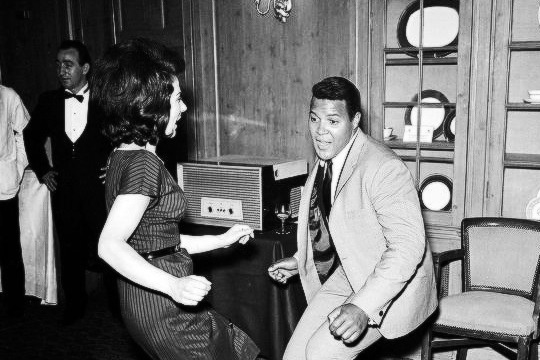
1960
The cold war continued to become colder as the two sides distrusted the other more and tried to influence other parts of the world. John F. Kennedy and Lyndon B. Johnson won the U.S. presidency with one of the smallest margins in history — 113,000 out of 68,3 million votes. The sexual revolution of the '60s had begun with the use of birth control pills and Hugh Hefner opening the first of his Playboy clubs in Chicago. The Flintstones is shown on television for the first time, and movies this year include The Magnificent Seven and Psycho. Notable technical achievements include the invention of the laser and a heart pacemaker. France tests its first atomic bomb and joins those countries with nuclear bomb technology. Notable names that appear in the limelight that year include Cassius Clay and Sir Francis Chichester. The U.S. sends the first troops to Vietnam following the French withdrawal in 1954 in the fight against communist North Vietnam.
Major events
• OPEC (Organization of Petroleum Exporting Countries) is formed during a meeting in Baghdad, Iraq.
• Construction on the Aswan High Dam in Egypt begins during January.
• NASA launches the Pioneer 5 space probe on March 11.
• The new capital city of Brazil, Brasília, is officially inaugurated on April 21.
• 100,000 join the "Ban the Bomb" rally on April 18 in London, England.
• The Summer Olympics are held in Rome, Italy.
• John F. Kennedy wins the United States presidential election.
• The United States announces that 3,500 American soldiers are going to be sent to Vietnam.
• The classic suspenseful horror film Psycho premieres on June 16 in New York City.
• The classic American novel To Kill a Mockingbird by Harper Lee is published on July 11.
• The first televised U.S. presidential debate takes place between John F. Kennedy and Richard Nixon.
• Soviet missile shoots down the U.S. U2 spy plane.
• Following major food shortages in East Germany, 160,000 refugees cross to West Germany. Nikita Khrushchev orders the construction of the Berlin Wall.
• The Irish Republican Army (IRA) starts its fight against the British.
• African police open fire with sub machine guns on demonstrators in the black township of Sharpeville, South Africa, on March 21.
• The 1960 Valdivia earthquake, or Great Chilean earthquake, takes place on May 22, 1960. The most powerful earthquake ever recorded, it affected southern Chile, Hawaii, Japan, the Philippines, eastern New Zealand, southeast Australia, and the Aleutian Islands.
• Sir Francis Chichester arrives in New York aboard Gypsy Moth 11 — he has made a record solo Atlantic crossing in 40 days.
• The American Heart Association links smoking to heart disease and death in middle-aged men.
• Princess Margaret marries Antony Armstrong Jones.
• Fidel Castro nationalizes American oil, sugar and other U.S. interests in Cuba.
• Sirimavo Bandaranaike is elected the world's first female Prime Minister, in Sri Lanka.
• Cassius Clay (who later took the name Muhammad Ali) wins his first professional fight after having won the gold medal in the Olympic games.
• The United States launches the world's first nuclear powered aircraft carrier, the USS Enterprise.
• Togo, Central Africa, Cote D'Ivore, Benin, Chad, Senegal, and Mauritania gain independence from France.
• Tidal wave in Morocco kills 12,000.
• Fifteen African countries gain independence, and South Africa leaves the commonwealth.
• Lady Chatterley's Lover goes on sale in England 32 years after it was banned.
• Chubby Checker starts a new dance craze, with "the twist."
• Over one hundred million television sets in use worldwide.
Top 10 highest-grossing films in the U.S.
1. Spartacus (dir. Stanley Kubrick)
2. Psycho (dir. Alfred Hitchcock)
3. Exodus (dir. Otto Preminger)
4. Swiss Family Robinson (dir. Ken Annakin)
5. The Alamo (dir. John Wayne)
6. The Apartment (dir. Billy Wilder)
7. BUtterfield 8 (dir. Daniel Mann)
8. Ocean's 11 (dir. Lewis Milestone)
9. Please Don't Eat the Daisies (dir. Charles Walters)
10. From the Terrace (dir. Mark Robson)
Billboard’s number-one music albums (in chronological order)
1. "Here We Go Again!" by The Kingston Trio
2. "The Lord's Prayer" by The Mormon Tabernacle Choir
3. "The Sound of Music" by The Sound of Music Original Cast
4. "Persuasive Percussion" by Enoch Light and Terry Snyder and the All Stars
5. "Theme From A Summer Place" by Bill Vaughn and His Orchestra
6. "Sold Out" by The Kingston Trio
7. "The Button-Down Mind of Bob Newhart" by Bob Newhart
8. "String Along" by The Kingston Trio
9. "Nice 'N' Easy" by Frank Sinatra
10. "G.I. Blues" by Elvis Presley
Source: [x]
151 notes
·
View notes
Text
Events 2.25
138 – Roman emperor Hadrian adopts Antoninus Pius as his son, effectively making him his successor.
628 – Khosrow II, the last great Shah of the Sasanian Empire (Iran), is overthrown by his son Kavadh II.
1336 – Four thousand defenders of Pilenai commit mass suicide rather than be taken captive by the Teutonic Knights.
1705 – George Frideric Handel's opera Nero premiered in Hamburg.
1836 – Samuel Colt is granted a United States patent for his revolver firearm.
1843 – Lord George Paulet occupies the Kingdom of Hawaii in the name of Great Britain in the Paulet affair.
1870 – Hiram Rhodes Revels, a Republican from Mississippi, is sworn into the United States Senate, becoming the first African American ever to sit in Congress.
1875 – Guangxu Emperor of Qing dynasty China begins his reign, under Empress Dowager Cixi's regency.
1912 – Marie-Adélaïde, the eldest of six daughters of Guillaume IV, becomes the first reigning Grand Duchess of Luxembourg.
1916 – World War I: In the Ble of Verdun, a German unit captures Fort Douaumont, keystone of the French defences, without a fight.[9]
1918 – World War I: German forces capture Tallinn to virtually complete the occupation of Estonia.
1921 – Georgian capital Tbilisi falls to the invading Russian forces after heavy fighting and the Russians declare the Georgian Soviet Socialist Republic.
1932 – Adolf Hitler, having been stateless for seven years, obtains German citizenship when he is appointed a Brunswick state official by Dietrich Klagges, a fellow Nazi. As a result, Hitler is able to run for Reichspräsident in the 1932 election.
1933 – Launch of the USS Ranger at Newport News, Virginia. It is the first purpose-built aircraft carrier to be commissioned by the US Navy.
1939 – As part of British air raid precautions, the first of 2.5 million Anderson shelters is constructed in a garden in Islington, north London.
1941 – The outlawed Communist Party of the Netherlands organises a general strike in German-occupied Amsterdam to protest against Nazi persecution of Dutch Jews.
1947 – The formal abolition of Prussia is proclaimed by the Allied Control Council, the Prussian government having already been abolished by the Preußenschlag of 1932.
1947 – Soviet NKVD forces in Hungary abduct Béla Kovács—secretary-general of the majority Independent Smallholders' Party—and deport him to the USSR in defiance of Parliament. His arrest is an important turning point in the Communist takeover of Hungary.
1948 – In a coup d'état led by Klement Gottwald, the Communist Party of Czechoslovakia takes control of government in Prague to end the Third Czechoslovak Republic.
1951 – The first Pan American Games are officially opened in Buenos Aires by Argentine President Juan Perón.
1956 – In his speech On the Cult of Personality and Its Consequences, Nikita Khrushchev, leader of the Soviet Union, denounces Stalin.
1980 – The government of Suriname is overthrown by a military coup led by Dési Bouterse.
1986 – People Power Revolution: President of the Philippines Ferdinand Marcos flees the nation after 20 years of rule; Corazon Aquino becomes the Philippines' first female president.
1991 – Disbandment of the Warsaw Pact at a meeting of its members in Budapest.
1994 – American-Israeli extremist Baruch Goldstein commits a mass shooting at the Cave of the Patriarchs mausoleum, leaving 29 dead and over 100 injured before he was disarmed and beaten to death by survivors.
1999 – Alitalia Flight 1553 crashes at Genoa Cristoforo Colombo Airport in Genoa, Italy, killing four.
2009 – Soldiers of the Bangladesh Rifles mutiny at their headquarters in Pilkhana, Dhaka, Bangladesh, resulting in 74 deaths, including 57 army officials.
2009 – Turkish Airlines Flight 1951 crashed during landing at the Amsterdam Schiphol Airport, Netherlands, primarily due to a faulty radio altimeter, resulting in the death of nine passengers and crew including all three pilots.
2015 – At least 310 people are killed in avalanches in northeastern Afghanistan.
0 notes
Photo









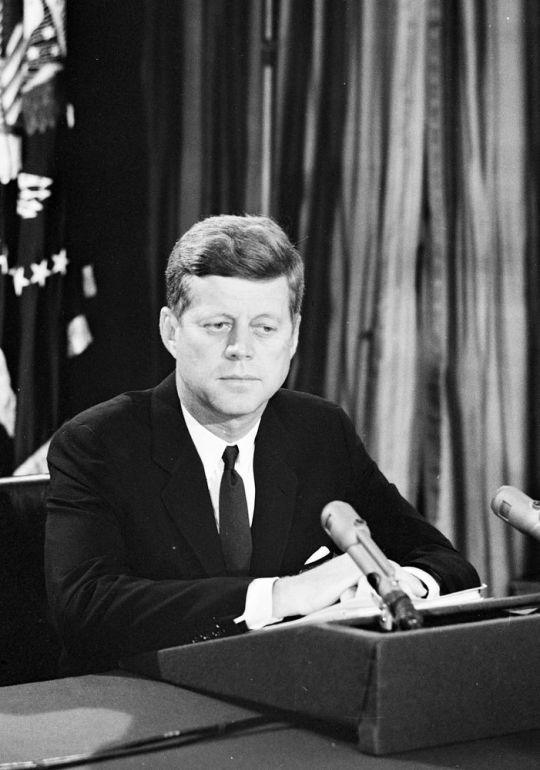
THIS DAY IN HISTORY
OCTOBER 22
JFK’s address on Cuban Missile Crisis shocks the nation
In a televised speech of extraordinary gravity, President John F. Kennedy announces on October 22, 1962 that U.S. spy planes have discovered Soviet missile bases in Cuba. These missile sites—under construction but nearing completion—housed medium-range missiles capable of striking a number of major cities in the United States, including Washington, D.C. Kennedy announced that he was ordering a naval “quarantine” of Cuba to prevent Soviet ships from transporting any more offensive weapons to the island and explained that the United States would not tolerate the existence of the missile sites currently in place. The president made it clear that America would not stop short of military action to end what he called a “clandestine, reckless and provocative threat to world peace.”
What is known as the Cuban Missile Crisis actually began on October 14, 1962—the day that U.S. intelligence personnel analyzing U-2 spy plane data discovered that the Soviets were building medium-range missile sites in Cuba. The next day, President Kennedy secretly convened an emergency meeting of his senior military, political, and diplomatic advisers to discuss the ominous development. The group became known as ExCom, short for Executive Committee. After rejecting a surgical air strike against the missile sites, ExCom decided on a naval quarantine and a demand that the bases be dismantled and missiles removed. On the night of October 22, Kennedy went on national television to announce his decision. During the next six days, the crisis escalated to a breaking point as the world tottered on the brink of nuclear war between the two superpowers.
On October 23, the quarantine of Cuba began, but Kennedy decided to give Soviet leader Nikita Khrushchev more time to consider the U.S. action by pulling the quarantine line back 500 miles. By October 24, Soviet ships en route to Cuba capable of carrying military cargoes appeared to have slowed down, altered, or reversed their course as they approached the quarantine, with the exception of one ship—the tanker Bucharest. At the request of more than 40 nonaligned nations, U.N. Secretary-General U Thant sent private appeals to Kennedy and Khrushchev, urging that their governments “refrain from any action that may aggravate the situation and bring with it the risk of war.” At the direction of the Joint Chiefs of Staff, U.S. military forces went to DEFCON 2, the highest military alert ever reached in the postwar era, as military commanders prepared for full-scale war with the Soviet Union.
On October 25, the aircraft carrier USS Essex and the destroyer USS Gearing attempted to intercept the Soviet tanker Bucharest as it crossed over the U.S. quarantine of Cuba. The Soviet ship failed to cooperate, but the U.S. Navy restrained itself from forcibly seizing the ship, deeming it unlikely that the tanker was carrying offensive weapons. On October 26, Kennedy learned that work on the missile bases was proceeding without interruption, and ExCom considered authorizing a U.S. invasion of Cuba. The same day, the Soviets transmitted a proposal for ending the crisis: The missile bases would be removed in exchange for a U.S. pledge not to invade Cuba.
The next day, however, Khrushchev upped the ante by publicly calling for the dismantling of U.S. missile bases in Turkey under pressure from Soviet military commanders. While Kennedy and his crisis advisers debated this dangerous turn in negotiations, a U-2 spy plane was shot down over Cuba, and its pilot, Major Rudolf Anderson, was killed. To the dismay of the Pentagon, Kennedy forbid a military retaliation unless any more surveillance planes were fired upon over Cuba. To defuse the worsening crisis, Kennedy and his advisers agreed to dismantle the U.S. missile sites in Turkey but at a later date, in order to prevent the protest of Turkey, a key NATO member.
On October 28, Khrushchev announced his government’s intent to dismantle and remove all offensive Soviet weapons in Cuba. With the airing of the public message on Radio Moscow, the USSR confirmed its willingness to proceed with the solution secretly proposed by the Americans the day before. In the afternoon, Soviet technicians began dismantling the missile sites, and the world stepped back from the brink of nuclear war. The Cuban Missile Crisis was effectively over. In November, Kennedy called off the blockade, and by the end of the year all the offensive missiles had left Cuba. Soon after, the United States quietly removed its missiles from Turkey.
The Cuban Missile Crisis seemed at the time a clear victory for the United States, but Cuba emerged from the episode with a much greater sense of security.The removal of antiquated Jupiter missiles from Turkey had no detrimental effect on U.S. nuclear strategy, but the Cuban Missile Crisis convinced a humiliated USSR to commence a massive nuclear buildup. In the 1970s, the Soviet Union reached nuclear parity with the United States and built intercontinental ballistic missiles capable of striking any city in the United States.
A succession of U.S. administrations honored Kennedy’s pledge not to invade Cuba, and relations with the communist island nation situated just 80 miles from Florida remained a thorn in the side of U.S. foreign policy for more than 50 years. In 2015, officials from both nations announced the formal normalization of relations between the U.S and Cuba, which included the easing of travel restrictions and the opening of embassies and diplomatic missions in both countries.
0 notes
Text
Father's Day
https://kohlinikita.blogspot.com/2020/06/fathers-day.html
Kaam se ghar aate he shaam ko,dekh ke khush hote hai saath poore pariwar ko, byaan karte nahi apni din bhar ki thakan kisi ko, bas koshish karte hai waqt barabar dene ki sabhi ko.
Bahut dur ki socha karte hai vo, jaldi se bhavnao mei bahaa nahi karte hai vo,lagta hai kai baar pathar ka ho dil jaise unka, par soch samajh ke he nirnaya liya karte hai vo.
Na kisi se tareef ki umeed, na kisi ki karte hai vo jhooti prashansa, Ulajh te nahi hai kisi gapshap mein zyada, bas apne kaam se matlab rakhte hai sabse zyada.
Hazaro sawal chal rahe hote hai mann mei, pata lagne nahi dete es baat ka kisi ko,bahar se dikhate hai jaise kuch hua he na ho, magar rakhte hai hisaab har ek cheez ka vo.
Ghar ki har tooti cheez ki marammat karna, aisa he kuch shauk hota hai unka, Haar nahi maante hai tab tak, kar na de theek uss tooti cheez ko jab tak.
Zindagi unki bhi aasan nahi, rehte hai subah se shaam tak ghar ke bahar vo, Koshish rehti hai unki hamesha yehi, ki kami na ho kisi ko kisi cheez ki kahi.
Chahe mile na mile poora araam, karte hai kahi bar vo itna kaam, Aisa koi kaam jo kabhi kiya na ho pehle, gehrai se samajhte hai usko shuru karne se pehle.
Margdarshak hote hai vo pariwar ke, saath dete hai vo har ek mukaam pe, Bhatak jao agar kabhi apne raste se, saburi ke saath le aate hai vo sahi raste pe.
Chehre se lagte hai swabhaav ke sakht, magar hote hai dil ke sabse naram, Bolte hai thoda kam magar sochte hai sabse zyada, kuch aise he hote hai papa.
Stay connected
Nikita Kohli
0 notes
Photo

"1. Last year the doctor told me that this kind of sadness is inherited. That they have discovered that sometimes it skips a generation. That the darkness inside me did not grow from nowhere it came from somewhere. I thought to myself, that there is a reason why I have always thought my heart was an attic where I hid pieces of myself. Pieces no one ever wanted. 2. The first boy I ever chose to show this sadness to decided to take it from my attic heart and planted it inside my soul instead. It was easy for him. My soul was a garden I showed him too soon. And he decided that meant he was allowed to take anything he wanted to. 3. Every man who has dared to love me since, has stared at this dark ivy covered soul like it is a haunted house, and I have never tried to explain the thing I have always known. Because men do not have to learn how to open their own selves and lock themselves up again. They are taught to be themselves and the world will accept them better that way. We are taught to break our bodies to be loved. We are taught to confuse sex and love. 4. I knew a girl whose father left her and she took all of her love for him and ate it to comfort herself. People joked how she lived in the kitchen. No one saw her tears when she ate. 5. A friend once told me that she locked herself inside the closet when her parents fought because her father beat her mother and she wished herself into the wood, just so she knew what it was like to be an inanimate object that couldn’t hear or feel anything. 6. My mother told me, that it is the way of the world for girls to grow into women by locking secrets inside themselves. Till now I still imagine every woman I have ever met as a big beautiful house. Full of secret rooms, hiding places, once filled with innocent laughter and joy. Now slightly sad and forgotten because of all those lost places inside them full of secrets." -Nikita Gill, The House Inside Her artwork by Susanne Ussing
208 notes
·
View notes
Text
Letters to my Ex

And as I sit here in solace, reading another heart breaker of Nikita Singh (the author) and all of her letters written to her ex, I wonder if I will ever be able to write one to you.
I still have so much to say,
over the years, just like my beard which you pushed me to keep, has grown, I have grown too.
However this fact will always pain me that my growing into a man came with bitterness. It came with my habit of questioning everyone, all their good deeds and their intentions (towards me or towards the world that now was irrelevant to me).
I remember how I would look at everyone with disdain. I have always refused to admit that for some years, I had started to hate every person who looked happy to me, be it a friend or a stranger. And this emotion came with a lot of guilt for I was realizing the kind of man I was turning into.
Somewhere deep down I felt that life had been unfair to me in terms of love. I loved you with an intensity that could turn volcanoes into beautiful valleys, but in return you couldn’t love me half as much as I will always love you.
But then, I guess it was all you ever had to even yourself to love.
But at least I grew, I matured, I planned my moves, I stopped believing everyone’s “Forever promises“. I stopped expecting people to go out of their way to make sure I am fine, even though I always did.
Yes, I cursed my friendships with almost everyone, I declared it to myself that they were not there for me for long enough. They gave up, they stopped checking upon me, and as I grew out “the idea of love”, to an extent I also grew out of the idea of forever friendships or forever bonds as well.
I questioned myself too, I went too deep into scrutinizing myself to find answers to why I wasn’t enough good for you to not let me go, or I should put it as, for not letting me stop you from going away.
I still have many questions, that I keep asking anonymously on my Instagram page, the questions that a lot of people are willing to answer, but I only want you to.
I don’t think I will ever be able to write any letters to you, after all, it wasn’t me who left.

by CA Nitin Kaushik
Check out my last post “Let me caress your soul” & “I have been with a lot of men“
Follow me on :-
Youtube, Pinterest, Facebook
imaginary_lands
इमेजिनरी लैंड्स
तेरी पहचान महज़ मेरी बर्बादी है,
तेरी अपनी कोई पहचान नहीं ।
Living life thousand NAZMs at a time.
Tiktok - imaginary_lands
taleem = education Adavat = enmity taleem-e-adava

I never felt anything of that intensity ever again

Did you ever fall in love again? Was it easy? Was

Ek kaam kardo, nahi actually do, ek toh post bata

Ramadan Mubarak 🙌 Taleem bhi paayi saath hi hu

"Ramzano mein main bhookha reh liya karta tha saat

LINK TO FULL VIDEO IN BIO I recently came across

"लगा के आग शहर को, ये

Ramzan Mubarak ✨ . . . . . Roti kum padne par hu

RAMZAN MUBARAK ✨ . . . . . Roze poore chal rahe

"Shayad pata tha usse, hum juda ho jaenge" I reme

Do you guys think, being in a relationship is the

WHICH CHILDHOOD SONG STILL TAKES YOU BACK YEARS DO

LINK TO FULL VIDEO IS IN BIO 🙈 lekin haamn yaa

I recently came across boys locker room controvers

Kabhi Krishn toh kabhi raam hu main 🔱✨ . . It

"Kon Kehta hai Sabak Sirf Kitabo se Sikhi jaati h

Kaise ho sab? toh ek video dala hai "boys locker

Ek sher, apni hi azmat mein 🔱✨ . . . . . Mera

Reminds of the scene of Ae Dil Hai Mushkil, where

Mujhe yakeen hi nahi ho raha yeh kabhi maine likha

Hamara rishta bhi ajeeb ho chuka hai, pehle DM mei

Raat nahi guzarni thi mujhe uske saath, main dopah

YEH SAALI ZINDAGI. . . . . Forever in our hearts @

Follow on Instagram
The post Letters to my Ex appeared first on Imaginary Lands Stories.
from WordPress http://www.imaginarylandstories.com/english/letters-to-my-ex/
0 notes
Text
November 15
1777: The Articles of Confederation, instituting perpetual union of the United States of America, are adopted by Congress.
1864: Union Major General William T. Sherman‘s troops set fires that destroy much of Atlanta’s industrial district prior to beginning Sherman’s March to the Sea.
1881: The American Federation of Labor is founded.
1917: Kerensky flees and Bolsheviks take command in Moscow.
1920: Forty-one nations open the first League of Nations session in Geneva..
1942: An American fleet defeats a Japanese naval force in a clash off Guadalcanal.
1946: The 17th Paris Air Show opens at the Grand Palais des Champs-Elysees. It is the first show of this kind since World War II.
1952: Newark Airport in New Jersey reopens after closing earlier in the year because of an increase in accidents.
1957: Soviet Premier Nikita Khrushchev asserts Soviet superiority in missiles, challenging the United States to a rocket-range shooting match.
1960: The first submarine with nuclear missiles, the USS George Washington, takes to sea from Charleston, South Carolina.
1962: Cuba threatens to down U.S. planes on reconnaissance flights over its territory.
Source: historynet.com
1 note
·
View note